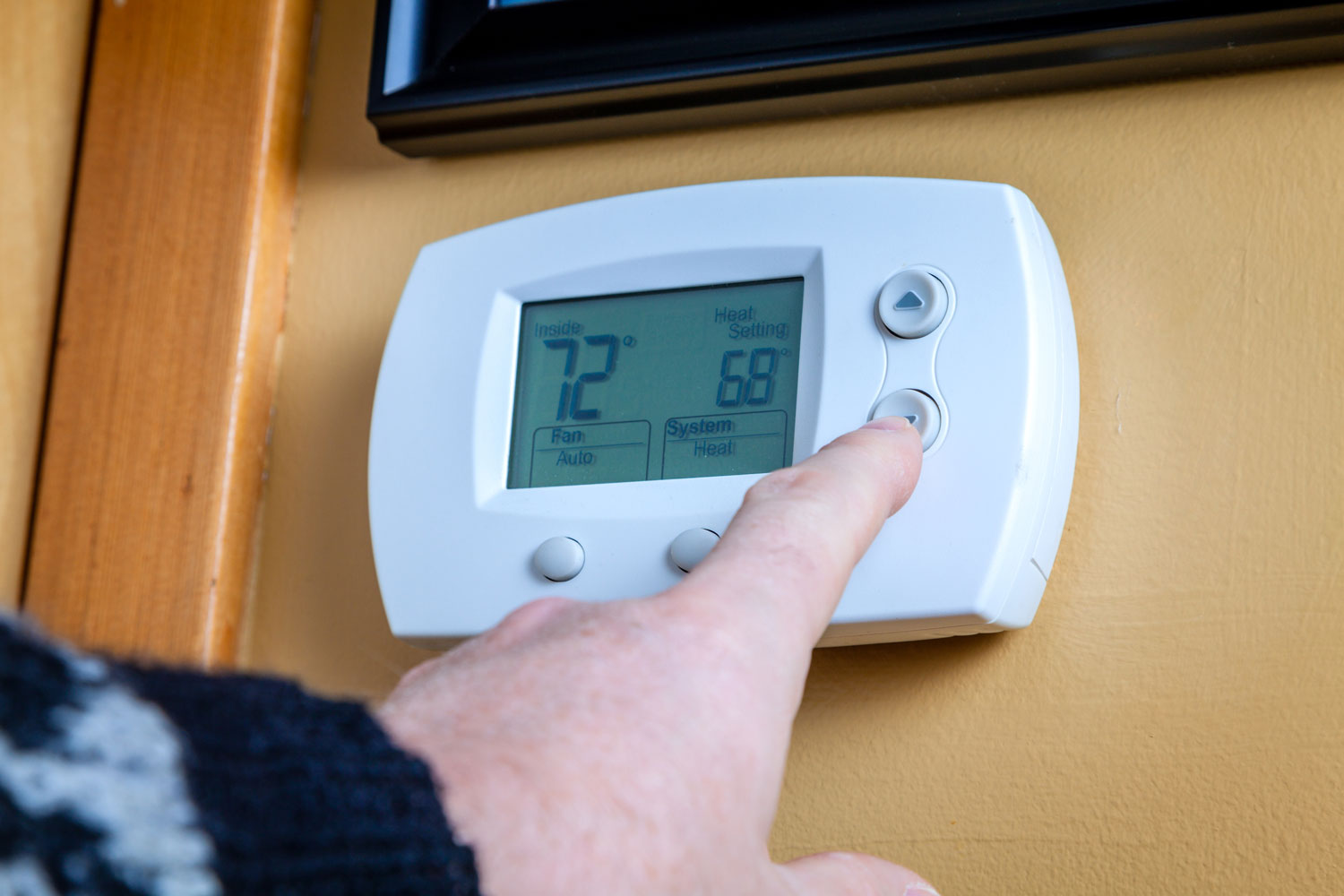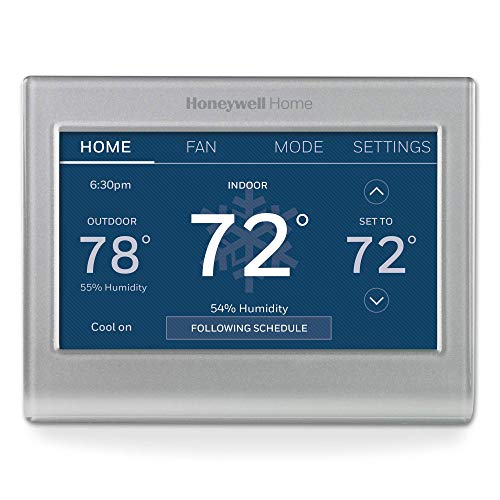There is a question as old as the first thermostat, and that is, whether the furnace fan should be set to "auto" or "on." It's a fair inquiry. You want to save money, maintain your HVAC system, and above all, be as comfortable as possible in your home. We've done the research to give you an answer.
"auto" is the best setting for your furnace fan in the winter. It will aid in saving energy and money while also working to keep your home at an optimal temperature.
However, for summer, "on" is the best setting for your furnace fan. It will prevent hot spots in the home, providing more efficient cooling and an overall more sufficient AC system.
So now you know what settings are best to use for your furnace fan in both the cool and hot months of the year, and you also know the primary reasons this is so. You may like a more detailed explanation, though. Keep reading to learn more.

The Furnace Fan
The furnace fan is an obscure yet vitally important feature in your HVAC system, but many of us may not have any idea about what it is or its function. It's important to have an understanding of this feature on your furnace.

What It Is And Its Function
The furnace fan also referred to as a blower, is a feature of the furnace unit which uses electricity to push heated or cooled air throughout the home's ventilation system. This is otherwise referred to as "forced convection."
In homes without a central cooling system, this is only used for the air heated by the furnace, but in homes with central cooling, it works to circulate the cool air.
In times of old, "natural convection" was the only way of heating a home. Air that was warmed by stoves or fireplaces would waft to the open areas of the home. This was not very practical, as the inhabitants would have to stay close to the heat source in cool seasons.
The furnace fan is a very wise and useful invention, making it so that millions of families across the world can comfortably warm and cool their homes.
View this furnace fan on Amazon.
Furnace Fan Settings
Since the furnace fan serves such an essential purpose, it's necessary to know the settings and what they mean. We'll discuss a few of them here.
The Auto Setting
This setting on the furnace fan can be accessed from your home's thermostat. When the furnace fan is set to "auto," this means that the fan will not run continuously and will only kick on when the thermostat signals to the furnace or air conditioning unit to provide warm or cool air.
When the furnace or air conditioning unit has sufficiently provided the home with warm or cool air, and the temperature in the home matches what the thermostat is set to, the unit will stop running, and so will the furnace fan.
The On Setting
This setting can also be accessed from the thermostat. When the furnace fan is set to "on," the fan will continuously run, whether or not the furnace or air conditioning unit is running.
If your furnace fan is on auto, you may notice that you can constantly hear or feel the air coming through the vents in your home.
Can You Adjust A Furnace Fan Speed?
Yes, this is possible, but it is a much more involved and strenuous process than that of pushing a button on your thermostat. To adjust the furnace fan speed, you must:
- Turn off the furnace blower's power source.
- Disconnect the wires that are connected to the coolant terminal.
- Using a manometer, check the blower speed on each of the wires.
- Depending on what speed you would like your furnace fan to blow on, connect the selected wire to the bottom right of the coolant terminal, where the black wire was initially located.
It is best to let an HVAC professional adjust this setting if possible, as you could acquire serious injuries if mistakes are made.
In The Winter

Winter is a time to be especially thankful for the furnace fan since homes wouldn't be nearly as warm and cozy without it. This is also a time to use the furnace fan more sparsely. Here's why.
Reasons To Use Auto Setting
Setting your fan to "auto" this winter is a good idea, and there are a few reasons why. One of these is that it will keep your home warmer for longer.
When the fan pushes air that has been just heated, this warms the home, but if the air that has not been heated is pushed through the home, it will just cause the temperature in the house to drop more quickly, which leads us to our next reason.
Keeping your fan on "auto" during the winter will save you money. You want your home to retain the heat that your furnace has created, as this will cause the furnace to have to work less, which will save you money on both electricity and fuel. With your fan on "auto," this will help preserve the heat in the home for longer and save energy.
Another reason one may not think of is that keeping your furnace fan on "auto" during the winter will help prolong the life of the furnace filter. Less air will need to be filtered this way so that the filter will stay clean for longer.
Take a look at this programmable thermostat on Amazon.
Reasons To Not Use On Setting
Setting your furnace fan to "on" this winter is not a good idea. We'll give you a few reasons as to why. One of these, as stated earlier, is that it will cause the temperature in the home to drop more quickly. Of course, this is counterproductive.
Another reason is that it will cost you more money, not only with the more run cycles in the furnace system but also because the furnace fan is one of the most significant consumers of electricity in the home.
It also will cause more wear on the furnace, as it will cause the furnace to have to start and stop more often. If this is done year after year, it could shorten the furnace's working life.
Should The Fan Be On When Heating Is On?
Yes. When you hear your furnace kick on to begin heating cool air, you should also hear the hum of the furnace fan as it pushes this heated air through the ventilation system. You should also be able to place your hand over a vent and feel the warmed air blowing out.
If the furnace fan does not seem to be running or if it seems to be running very slowly, this signals a definite problem with your HVAC system.
How Often Should The Furnace Fan Run In The Winter?
In the winter, it's best for the furnace fan only to run when the furnace is running. How often this happens depends on how often the furnace must deliver heated air to the home to raise the temperature.
Many factors will affect this, including the age of the home, the quality and amount of insulation, the size of the home, and more. Ideally, the furnace and furnace fan should cycle anywhere from 3 to 8 times per hour.
In The Summer

The summer is when most wouldn't even think of the furnace fan, but this is the season to use this feature most. Here are the reasons why.
Reasons To Use On Setting
Setting the furnace fan to "on" in the summer is best. One of the reasons you should do so is to cool the home and maintain the temperature more efficiently.
When the furnace fan is set to "on," it will run all the time, whether or not the air conditioning unit is cycling. This is helpful because it will continuously push air throughout the home and at a high rate of speed.
Even when no air is being cooled, this will prevent hot spots in the house and keep the temperature low for longer. This will also prevent too many starts and stops of the air conditioning unit, shortening its working life. We especially recommend this setting if you have a large home with multiple stories.
Reasons Not To Use Auto Setting
Since the furnace fan uses so much electricity, it can be tempting to turn the setting to "auto," especially when your electric bill is already going to be at its highest. However, this may be counterproductive.
For the reasons discussed earlier, using the "auto" rather than "on" setting may inadvertently cause your air conditioning unit to run more often, using up electricity and shortening the unit's lifespan. In some cases, keeping your fan on "auto" may actually raise your summer energy bill!
Is It Bad To Run A Furnace Fan All The Time?

This is healthy for both the blower motor and beneficial for the air conditioning unit. Start-ups cause the most wear and tear on both of these mechanisms.
In Conclusion
The furnace fan is a vital feature of your heating and cooling system, so it's essential to know how to set it. We've stated that it's best to position your fan to "auto" in winter and "on" in summer. This will help keep your home comfortable and your HVAC system working at top efficiency.
Want to learn more about the mechanics of your furnace? Visit these related posts:



This article was EXTREMELY HELPFUL! Not only did I learn what to do, I also learned WHY. Thank you!!!
I ran my fan ON last summer and my logging tool averaged 65% RH and a 62F dew point average across July and August. After reading that ON allowed condensed water to blow right back into the house, I set it to Auto this summer – 53% RH and 55.9F dew point. 12% RH and 5F dew point difference is quite noticeable. . And the temperature range from the main floor to upstairs was 1.8F On, 2.0F Auto. I’m sticking with Auto.